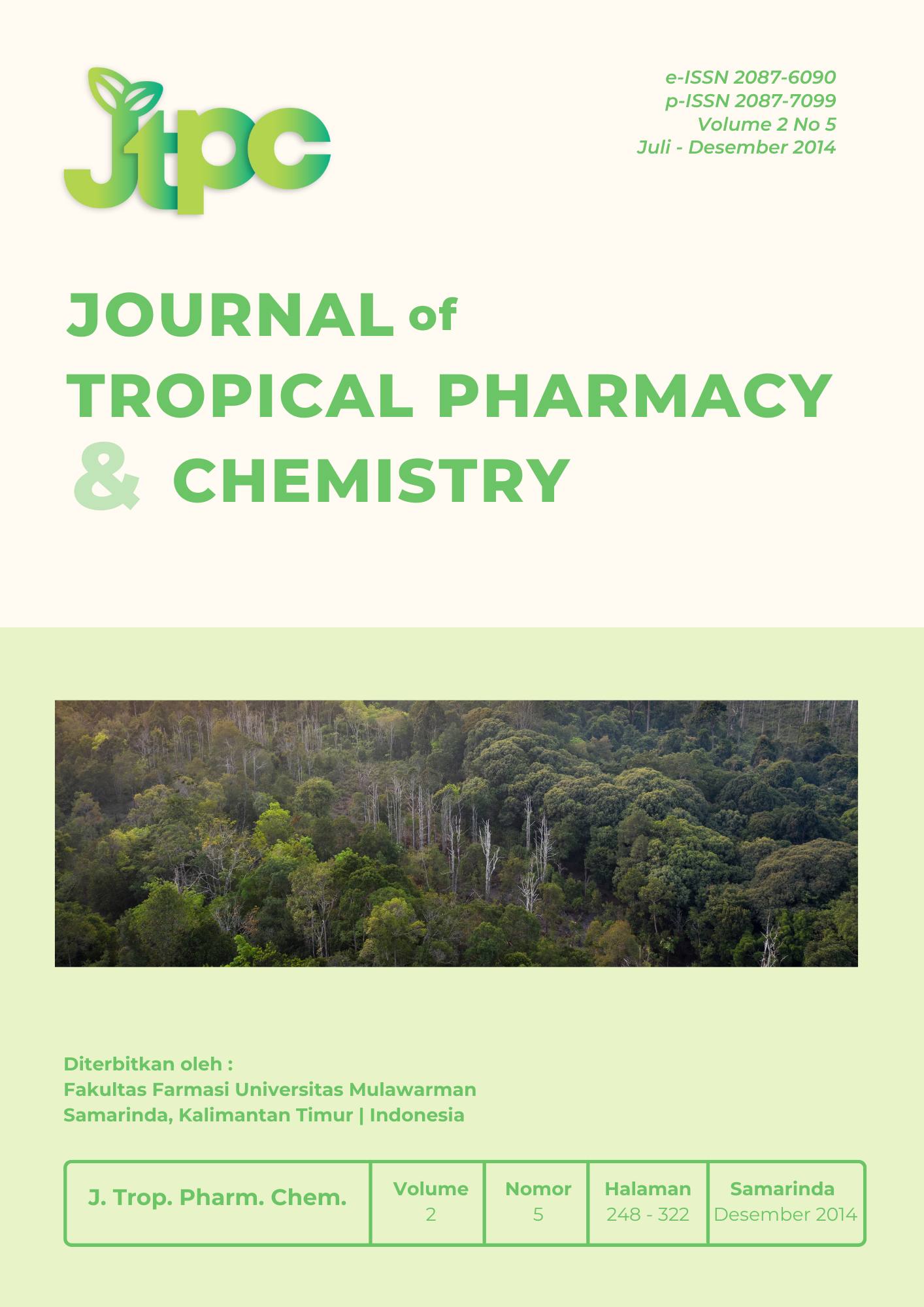Quantitatif Structure-Activity Relationship Analysis of a Carbazole Analog Compounds as Antibacterial using Electronical Descriptors
Keywords:
QSAR, Atomic Net Charges, Cross Validation MethodsAbstract
The Quantitatif Structure-Activity Relationship (QSAR) study has been established on 13 Carbazole analog compounds to their antibacterial activity using electronical descriptors. The development of computational chemistry, in particular quantum chemical calculation progression, has made the possibility of molecule modeling and pharmacochemistry exploration of molecule structures. This emerging semiempirical method can be implemented in QSAR using Hansch model. A research associated with QSAR antibacterial activity of Carbazole analog compounds which used semiempirical AM1 (Austin Model 1) method has been conducted. The geometrical optimation of 2D into 3D structures was done utilizing HyperChem program with the Polak – Ribiere algorithm. Results revealed that atom in the position C8, C9, C10 and C12 are necessary to predict biological activity of Carbazoleanalog.
Downloads
References
1.Breindl, A., Beck, B., Clark, T., Glen, R.C., 1997, Prediction of n-Octanol/Water Partition Coefficient, Log P, Using Combination of Semiempirical MO-Calculations and a Neural Network, J.Mol. Model., 3, 142 - 155
2.Charifson, P.S., 1997, Practical Aplication of Computer-Aided Drug Design, Marcel Dekker, INC., New York
3.Cho, D.H., Lee, S.K., Kim, B.T., No, K.T., 2001, Quantitative Structure – Activity Relationship (QSAR) Study of New Fluorovinylloxyacetamides,
Bull, Korean. Soc.,22, 388 - 394
4.Daniel, C., Wood, F.S., 1980, Fitting Equations to Data, Second Edition, John Wiley and Sons, New York
5.Dean, M.J.S., 1995, Molecular Similarity in Drug Design, Blackie Academic & Professional, Glasgow
6.Dewar, M.J.S., Zoebish E.G., Healy E.F., Stewart J.J.P., 1985, AM 1 : A New General Purpose Quantum Mechanical Molecular Model,J. Am. Chem. Soc., vol 107
7.Kubinyi, H., 1993, QSAR; Hansch Analysis and Related Approaches, VCH Verlagsgesellschaft, Weinheim
8.Nakamura, S., 1984, A Brief RevewOnCarbazomycins, Reprinted From The Transctions Of The Bose Research Institute, Vol 47 No.1
9.Naid, T., 1986, Studies On Carbazomycins C, D, E, F, G And H, Dissertation, Institute Of Pharmaceutical Sciences, Hiroshima Universty, School Of Medicine, Japan
10.Naid, T., Kitahara, T., Kaneda, M., 1987, Carbazomycins C, D, E, and F, Minor Components of The Carbazomycin Complex, The Journal of Antibiotic, Vol. 40, No.2, pp. 157 – 164.




